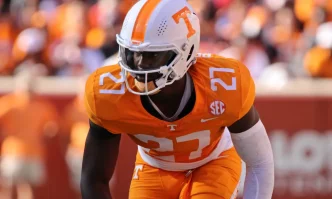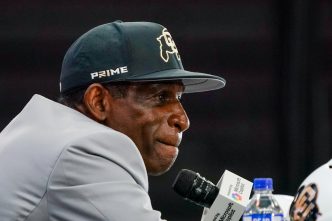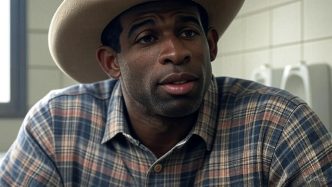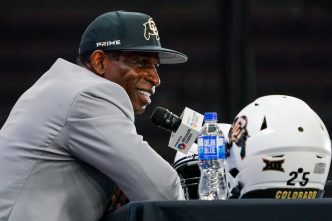A significant transformation is unfolding in college sports, as new regulations now permit schools to pay athletes directly. This monumental shift, facilitated by a multi-billion dollar legal settlement that received the green light on Friday, marks a pivotal moment in how we perceive amateur athletics.
U.S. District Judge Claudia Wilken’s approval comes as the culmination of extensive negotiations between the NCAA, its top conferences, and attorneys representing Division I athletes. This landmark resolution effectively concludes three federal antitrust lawsuits, all of which pointed to the NCAA’s illegal constraints on the earning potential of college athletes. As we stand on the brink of this new era, schools are poised to start compensating their players beginning July 1.
This ruling isn’t just procedural; it compels schools and conferences to act swiftly in establishing the necessary framework to manage these new payment systems. With Judge Wilken’s decision finalized less than a month before the payouts are set to begin, the urgency cannot be understated. Schools will need to hustle to create robust systems that not only facilitate payments but also ensure compliance with the new regulations.
As part of the settlement, the NCAA will pay approximately $2.8 billion in back damages to athletes who competed at any level since 2016. Looking forward, each school will be authorized to compensate its players up to certain limits. The projected annual cap is estimated to start at around $20.5 million per school during the 2025-2026 season, with gradual increases throughout the term of the agreement. Importantly, these new payments will supplement scholarships and benefits athletes currently receive.
This order represents a significant leap toward dismantling outdated amateurism rules that have long governed college sports. The changes initiated in 2021, which have allowed athletes to profit from third-party endorsements through name, image, and likeness (NIL) deals, set the stage for this current evolution. In just a few years, we’ve seen boosters creating collectives to fund NIL deals, effectively acting as unofficial salaries for players. With this new settlement, however, the flow of money will now originate directly from athletic departments.
Sedona Prince, a former college basketball standout and co-lead plaintiff in one of the lawsuits, expressed the sentiment of many when she shared her excitement over the ruling. “It’s historic,” she remarked, acknowledging the painstaking journey to get to this point. “It seemed like this crazy, outlandish idea at the time of what college athletics could and should be like… but it’s going to change millions of lives for the better.”
The Supreme Court’s unanimous decision in June 2021, which struck a significant blow to the NCAA’s restrictive practices, underscored the necessity of reevaluating college athletics as more than a mere educational pursuit but rather as a lucrative entertainment industry. This landmark ruling has catapulted further legal challenges to the NCAA, leading to an environment where many fundamental questions about athlete rights remain up in the air.
Although this settlement brings hope for enhanced control over player compensation, it doesn’t spell the end of litigation. The core issues about whether athletes should be classified as employees and the regulations governing their eligibility continue to linger, inviting further scrutiny.
NCAA president Charlie Baker is optimistic that the settlement will restore some degree of order, particularly amid the rampant and largely unregulated NIL landscape. With hopes high that federal lawmakers might soon intervene, NCAA leaders are asking Congress for legislation that could prevent athletes from being classified as employees while also providing antitrust protections to establish potential compensation caps.
Envisioning the broader impact, NCAA officials are advocating for new rules designed to limit the clout of boosters and NIL collectives over roster decisions. Moving forward, endorsement agreements between athletes and boosters will require thorough vetting to confirm that they serve legitimate business purposes and aren’t merely thinly veiled recruiting incentives.
That said, skepticism exists among insiders regarding the effectiveness of measures intended to curb booster spending and restore competitive balance. Some industry experts contend that limiting finances in this way could prompt a fresh wave of lawsuits, further complicating the landscape.
To oversee this new chapter, power conferences have announced the formation of the College Sports Commission, a newly minted enforcement organization. This group will assume responsibilities that previously lay with the NCAA, aiming for a more efficient approach to investigating potential violations stemming from the new rules. In a strategic move, MLB executive Bryan Seeley has been appointed as CEO of the commission, tasked with building the investigative teams and managing the organization’s operations.
Baker acknowledged the complexity ahead, noting in an open letter the challenges that will inevitably arise. “This is new terrain for everyone,” he wrote, emphasizing the transitional nature of these developments and the transformative potential they hold for the NCAA.
The path ahead may be rocky, but this settlement undoubtedly represents a watershed moment in the evolution of college sports, igniting conversations and change that could have lasting implications on programs, athletes, and the very fabric of collegiate athletics for years to come.







